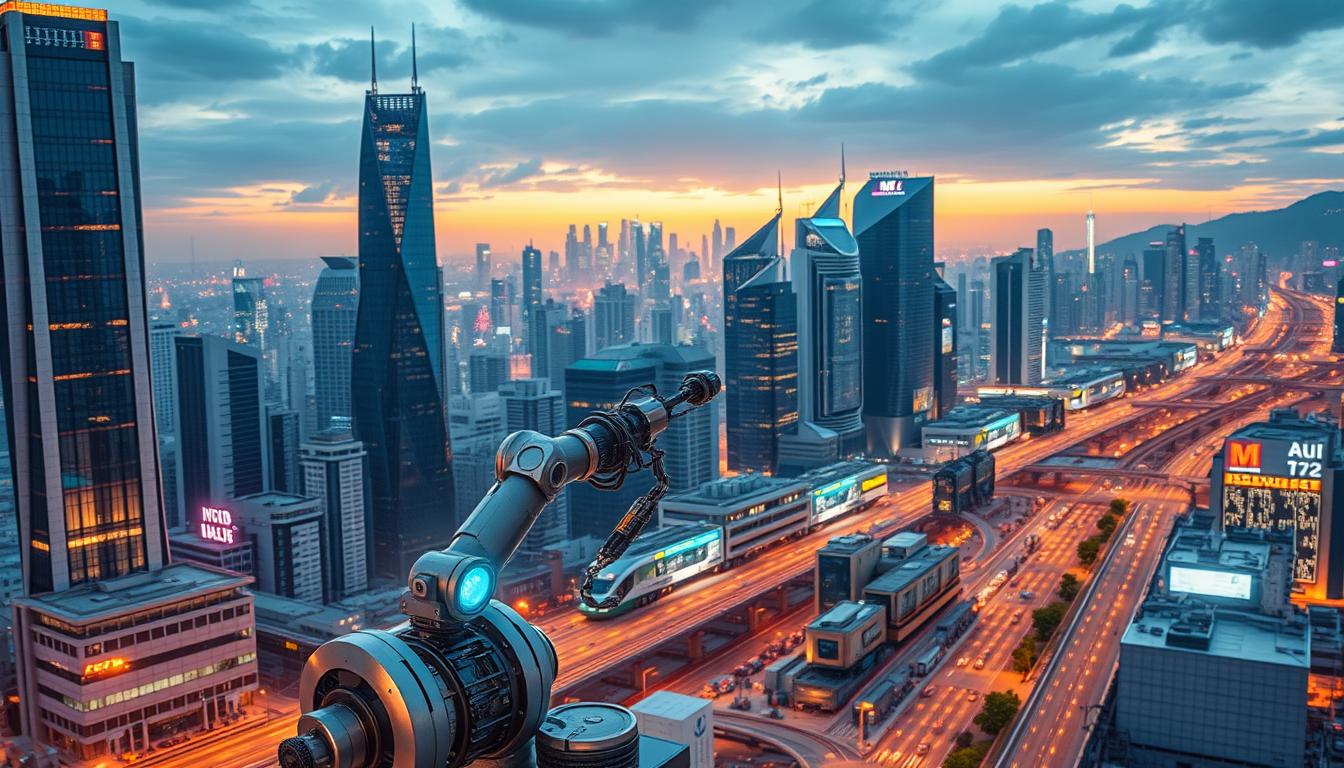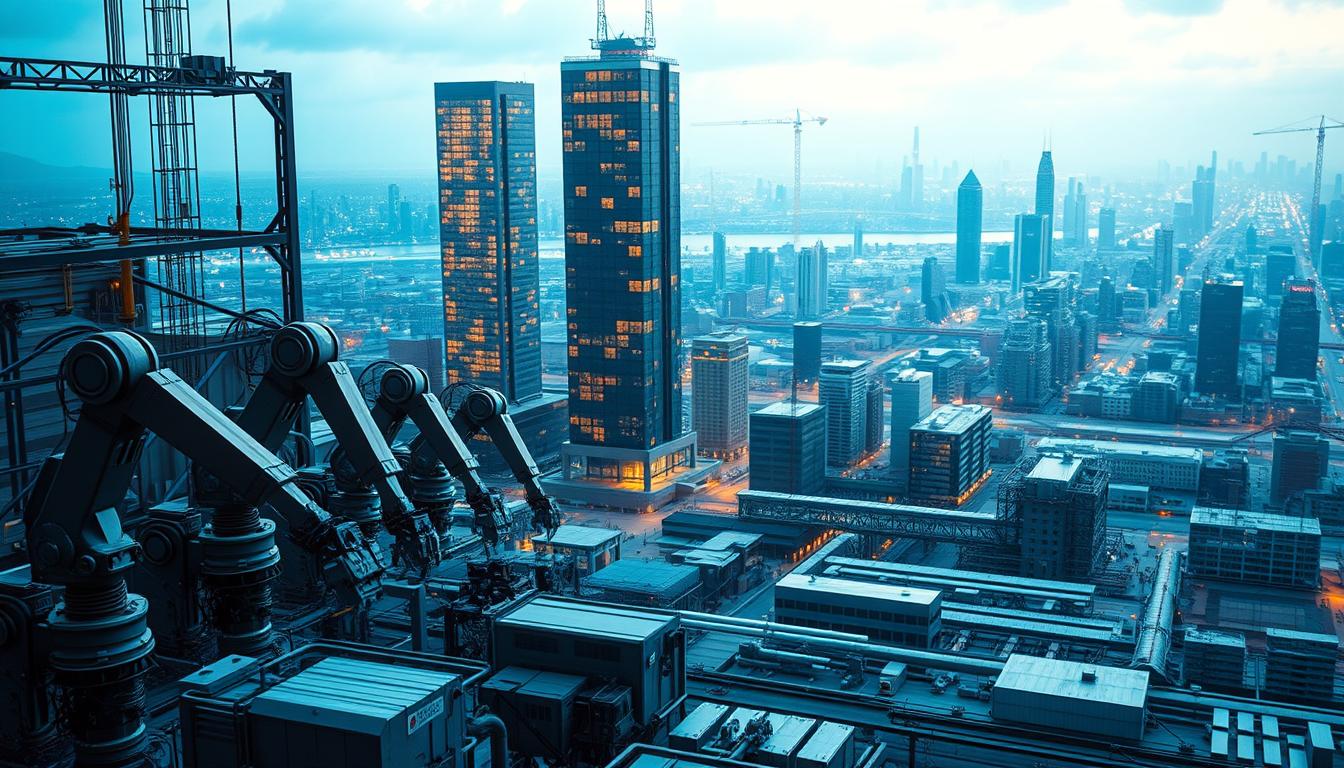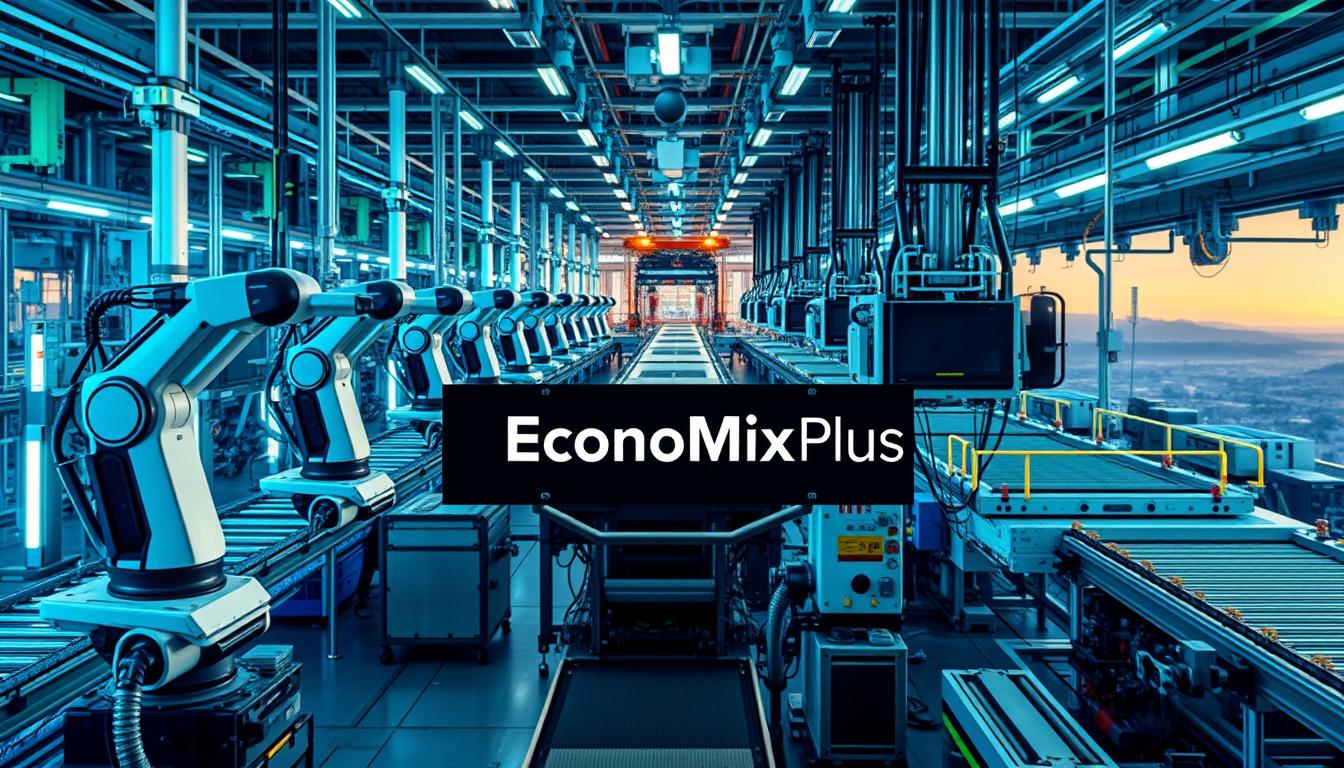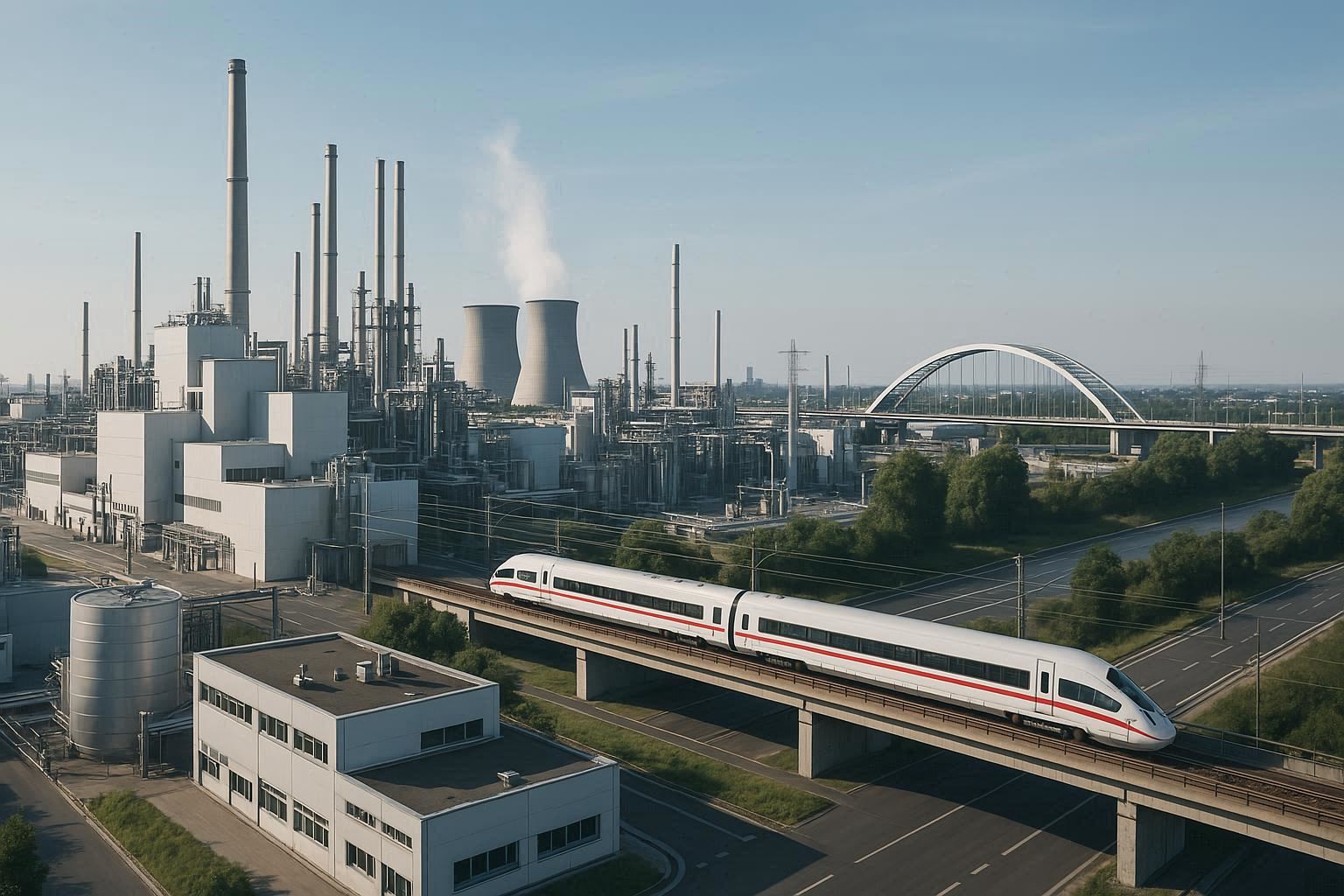Technology continues to transform the way we live and work. From factories to offices, its impact on the workforce is undeniable. But what does this mean for the future of labor? Is it a threat to existing roles, or does it open doors to new possibilities?
According to Brookings, advancements in technology have a dual effect. While some jobs may disappear, others emerge as productivity and consumer spending rise. McKinsey predicts that by 2030, around 12 million workers in the U.S. and Europe may need to transition to different roles.
Historically, shifts like the Industrial Revolution brought similar challenges. Yet, they also led to the creation of entirely new industries. Today, artificial intelligence is expanding the scope of automation, affecting professions across the board.
This article explores the measurable economic impacts of these changes. It also highlights the skills workers will need to thrive in this evolving landscape.
Key Takeaways
- Technology drives both job displacement and the creation of new roles.
- Productivity gains and consumer spending can fuel job growth.
- Millions of workers may need to transition to different roles by 2030.
- Historical shifts, like the Industrial Revolution, offer valuable insights.
- Artificial intelligence is expanding automation across various professions.
- Upskilling will be essential for workers to adapt to future demands.
Introduction to Automation and Its Role in the Workforce
Over the past few decades, automation has reshaped industries and redefined how tasks are performed. From robotic process automation (RPA) to artificial intelligence (AI) and machine learning, these tools have become integral to modern business operations. They handle repetitive tasks with precision, allowing workers to focus on more complex responsibilities.
Brookings Institute introduces the concept of the “complementary worker,” where humans and machines collaborate to achieve better outcomes. For example, in healthcare diagnostics, AI assists doctors by analyzing data, while medical professionals interpret results and make decisions. This synergy enhances efficiency and accuracy.
McKinsey highlights that 40% of organizations face productivity barriers due to unclear roles. This underscores the need for better alignment between workers and their responsibilities. Automation, when implemented effectively, can address these challenges by streamlining processes and reducing inefficiencies.
Research by Frey and Osborne reveals that 47% of tasks are susceptible to automation, but this doesn’t necessarily mean full job replacement. Instead, it often leads to task-level changes. For instance, while robot welders dominate manufacturing assembly lines, creative roles in marketing remain uniquely human-driven.
Columbia Business School reports that companies adopting AI experience a 15% revenue growth. This demonstrates the economic potential of integrating intelligent systems into operations. However, it also emphasizes the importance of upskilling workers to adapt to these changes.
Brookings’ “good jobs” framework advocates for policies that ensure fair wages and opportunities in the evolving market. Meanwhile, projections for the IT sector suggest significant growth by 2030, offering new avenues for employment and innovation.
As automation continues to evolve, its role in the workforce remains dynamic. While it transforms how tasks are performed, it also creates opportunities for workers to develop new skills and thrive in a changing market.
The Historical Context of Automation
From the Industrial Revolution to today, machines have transformed occupations and reshaped the world of work. This journey highlights how technological shifts have consistently altered industries and labor dynamics.
From the Industrial Revolution to Today
The Industrial Revolution marked a turning point in history. It introduced machines that revolutionized manufacturing, replacing manual labor with mechanized processes. For example, the Jacquard loom automated textile production, paving the way for modern programmable systems.
In the 19th century, textile automation led to the rise of machinist and technician roles. Similarly, the 1980s saw digital automation reduce clerical work, while today, artificial intelligence disrupts a broader range of professions.
McKinsey notes that 60% of current occupations have at least 30% automatable tasks. This mirrors historical patterns, where technological advancements initially displaced workers but eventually created new roles.
Lessons from Past Technological Shifts
History offers valuable insights into the impact of automation. For instance, the agricultural transition in China saw 100 million workers shift to other sectors. This demonstrates how economies adapt to technological changes.
Another example is the telephone operator. In the 1920s, this role peaked but became obsolete with digital switchboards. Yet, new service roles emerged in telecommunications.
Brookings highlights the Luddite protests during the Industrial Revolution. While workers initially resisted automation, it eventually led to job growth and economic expansion.
Key lessons include:
- Technological shifts often displace certain roles but create new opportunities.
- Upskilling is essential for workers to adapt to changing demands.
- Collaboration between humans and machines enhances productivity and creativity.
These historical parallels provide a roadmap for navigating today’s automation challenges. By learning from the past, we can better prepare for the future of work.
Does Automation Eliminate Jobs or Create New Opportunities?
The evolving landscape of work is shaped by technological advancements. These changes bring both challenges and opportunities for employees across various occupations. Understanding the balance between job displacement and job creation is crucial for navigating the future of labor.

Job Displacement: The Immediate Effects
Recent studies highlight the immediate impact of automation on the workforce. McKinsey predicts that 400 to 800 million global employees may face job displacement by 2030. This shift is driven by the automation of repetitive tasks, which account for 30% of work hours globally.
For example, the trucking industry faces significant disruption. With 3.5 million U.S. drivers at risk, the rise of autonomous vehicles threatens traditional roles. However, the growing demand for EV charging infrastructure is creating new jobs created in related fields.
Job Displacement: The Long-Term Perspective
In the long term, automation reshapes entire industries. Brookings reports that while 85 million roles may be displaced, 97 million new jobs created could emerge. This reflects a dynamic shift in the market, where certain occupations decline while others thrive.
Healthcare offers a compelling paradox. AI tools may reduce the need for radiologists, but the aging population drives demand for geriatric care. Similarly, Amazon’s use of 200,000 warehouse robots contrasts with its creation of over 1 million tech and logistics roles.
Reskilling is a critical factor in this transition. Programs like cloud certifications, which take six months, provide faster pathways than traditional four-year degrees. Germany’s workforce balancing act, where a decline of 3 million roles is offset by automation-driven demand, offers a model for other economies.
Brookings also advocates for wage insurance to support displaced retail workers. Such policies ensure that transitions are smoother and more equitable. As the market evolves, the focus remains on equipping employees with the skills needed for emerging roles.
The Current Impact of Automation on the Workforce
The integration of advanced technologies is reshaping industries and redefining the workforce. From manufacturing to healthcare, the impact of automation is evident. Businesses are leveraging tools like artificial intelligence to streamline operations and enhance productivity.

Industries Most Affected by Automation
Manufacturing is at the forefront of this transformation. Collaborative robots, or cobots, are increasing output by 15% in BMW plants. These tools work alongside employees, improving efficiency and safety.
Retail is another sector experiencing significant changes. Walmart uses shelf-scanning bots to manage inventory, while e-commerce platforms hire personalization specialists to enhance the customer service experience. This dual approach highlights the evolving nature of work in retail.
In the legal field, AI-powered contract review systems like LawGeex are reducing junior associate tasks by 80%. This allows professionals to focus on more complex legal matters, demonstrating how automation complements human expertise.
Healthcare is also benefiting from these advancements. PathAI’s diagnostic tools are creating demand for bioinformatics engineers. This shift underscores the growing importance of data in medical industries.
The Role of Artificial Intelligence in Modern Automation
Artificial intelligence is driving innovation across various sectors. In customer service, natural language processing systems have reduced routine queries by 35%. This allows employees to handle more complex issues, improving overall service quality.
Tesla’s production lines feature over 160 robots per vehicle, yet the company is also hiring extensively for battery R&D roles. This balance between automation and human expertise is crucial for sustained growth.
UPS’s ORION route optimization system saves 100 million miles annually, showcasing the impact of AI on logistics. Additionally, the demand for responsible AI specialists has surged by 300%, reflecting the need for ethical considerations in technology deployment.
As artificial intelligence continues to evolve, its role in modern automation will expand. Businesses must adapt by equipping their employees with the skills needed to thrive in this dynamic environment.
Future Implications of Automation
The future of work is being reshaped by technological advancements, creating both challenges and opportunities. As industries evolve, the demand for new skills and roles is growing. Professionals must adapt to stay relevant in this dynamic landscape.

Emerging Job Opportunities in the Age of Automation
Technological innovation is driving the creation of roles that didn’t exist a decade ago. For example, Siemens’ Mechatronics certification programs are preparing factory technicians for advanced manufacturing environments. Similarly, the rise of AI has led to emerging opportunities like prompt engineers and robot supervisors.
McKinsey projects that 50 to 85 million healthcare jobs will emerge due to aging populations. This highlights the importance of aligning education with industry needs. Companies like DHL are also transitioning warehouse staff to analytics roles through their Reskilling Academy.
The Need for Upskilling and Reskilling
According to the World Economic Forum, 50% of the workforce will require reskilling by 2025. Programs like Microsoft’s Global Skills Initiative aim to train 25 million individuals in digital skills. This reflects the growing emphasis on lifelong learning.
The European Commission’s Digital Education Action Plan targets increasing digital literacy across all sectors. Coursera’s Enterprise data shows a 4x enrollment increase in AI literacy courses, underscoring the demand for tech-savvy professionals.
As automation advances, roles like AR/VR maintenance technicians will become essential. By investing in education and training, humans can thrive alongside intelligent systems in the future workforce.
Policy and Societal Responses to Automation
As automation reshapes industries, governments and corporations are stepping up to address its societal impacts. The focus is on creating policies that support workers and ensure equitable transitions. Both public and private sectors play critical roles in shaping the future of labor.
Government Initiatives to Support Workers
Governments worldwide are implementing programs to help workers adapt to technological changes. Denmark’s Flexicurity model, for example, offers 90% wage replacement during retraining. This approach ensures financial stability while encouraging skill development.
Singapore’s SkillsFuture program provides $500 annual training subsidies to citizens. This initiative promotes lifelong learning and helps workers stay competitive in evolving occupations. Similarly, Germany’s Kurzarbeit program has been adapted to support transitions in automated industries.
“Wage supplements and employer retraining taxes are essential for smooth transitions,” notes Brookings.
France’s proposed robot tax, initially aimed at curbing job displacement, pivoted to an innovation fund. This shift highlights the importance of balancing policy with economic growth.
Corporate Responsibility in the Age of Automation
Corporations are also taking steps to address the impacts of automation. Salesforce’s Trailhead platform has skilled over 3.5 million users, preparing them for tech-driven roles. Amazon’s $700 million upskilling pledge aims to train workers in areas like cloud computing through its AWS re/Start program.
General Motors’ UAW contract includes a 40% pay premium for EV battery plant workers. This move reflects a commitment to fair wages in emerging industries. Right-to-repair laws are another example, enabling growth in maintenance technician roles.
| Country/Company | Initiative | Key Benefit |
|---|---|---|
| Denmark | Flexicurity Model | 90% wage replacement during retraining |
| Singapore | SkillsFuture Credits | $500 annual training subsidies |
| Germany | Kurzarbeit Program | Supports automation transitions |
| Salesforce | Trailhead Platform | Skilled 3.5M users |
| Amazon | AWS re/Start | $700M upskilling pledge |
These efforts demonstrate the importance of collaboration between governments and corporations. By prioritizing workers and fostering innovation, societies can navigate the challenges of automation while maximizing its benefits.
Conclusion
The ongoing evolution of technology is reshaping the workforce and redefining traditional roles. While automation displaces certain jobs, it also drives the creation of new roles across industries. McKinsey projects a dynamic shift, with millions of workers transitioning to emerging fields by 2030.
This decade is critical for modernizing education systems. Programs like Siemens’ Mechatronics certifications and Amazon’s upskilling initiatives highlight the importance of lifelong learning. Historical resistance, like the Luddite fallacy, contrasts sharply with today’s need for continuous adaptation.
Regional variances also play a role. Germany’s demographic balance differs from India’s growth trajectory, yet both face similar challenges. PWC estimates a 26% GDP growth potential through proper implementation of automation.
Public-private partnerships, like the Siemens/UAW model, are essential for equipping the workforce with the skills needed for the future. Emerging roles in AI oversight and cross-domain system integration will shape the market.
Adaptive optimism is key. As AI tools empower individuals, they open new opportunities. Remember, 60% of today’s jobs didn’t exist in 2000. The future of work is not just about displacement—it’s about transformation.












